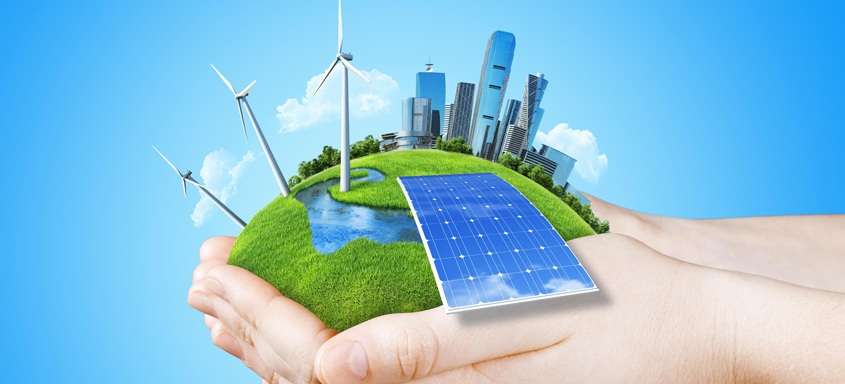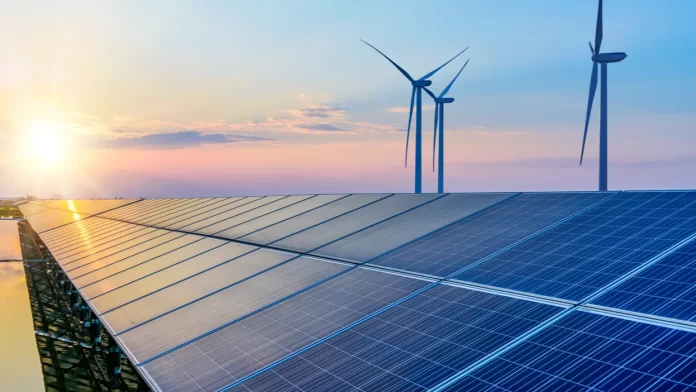The global demand for clean and sustainable energy solutions has never been greater. As the world grapples with the challenges of climate change, there is a growing urgency to shift away from fossil fuels and embrace renewable energy sources. Fortunately, advancements in technology are driving the development of innovative solutions that are revolutionizing the renewable energy sector. In this article, we will explore some of the most promising emerging technologies that are powering a sustainable future.
Solar Power: Beyond Traditional Photovoltaics
Solar power has long been a frontrunner in the renewable energy landscape, with traditional photovoltaic (PV) panels dominating the market. However, emerging technologies are pushing the boundaries of solar energy generation. One exciting development is the use of perovskite solar cells, which are cheaper and more flexible than traditional PV panels. Perovskite solar cells have shown great promise in achieving higher efficiency rates and can be integrated into a wide range of applications, from building materials to wearable electronics.
Another breakthrough is the concept of solar windows, where transparent solar cells are incorporated into windows to generate electricity. These windows have the potential to turn every building into a power generator without compromising aesthetics or natural lighting. Additionally, solar paint, which utilizes semiconducting nanoparticles, is being explored as a way to convert any surface into a solar panel.
Wind Power: Harnessing the Power of Offshore Winds
Wind power is a mature renewable energy technology, but recent innovations are expanding its reach and efficiency. Offshore wind farms are emerging as a game-changer in the wind energy sector. By locating turbines offshore, these farms can take advantage of stronger and more consistent winds, resulting in higher energy production. Floating wind turbines, which can be deployed in deeper waters, are gaining traction due to their scalability and reduced environmental impact.

To overcome one of the limitations of wind energy, energy storage technologies are being integrated into wind farms. For instance, excess electricity generated during low demand periods can be stored in batteries or converted into hydrogen through electrolysis. This stored energy can then be used to meet peak demand or when the wind is not blowing. Such hybrid systems are ensuring a more reliable and consistent power supply from wind farms.
Geothermal Energy: Expanding Opportunities
Geothermal energy harnesses the heat from the Earth’s core to generate electricity and provide heating and cooling solutions. While geothermal power plants have been around for decades, emerging technologies are unlocking new opportunities. Enhanced Geothermal Systems (EGS) involve creating artificial geothermal reservoirs by injecting water into hot rocks deep underground. This technology can make geothermal energy accessible in areas that were previously unsuitable for traditional geothermal power generation.
Moreover, researchers are exploring the use of geothermal energy in direct heat applications. This includes using geothermal heat for industrial processes, greenhouse farming, and district heating systems. By expanding the applications of geothermal energy, we can tap into a significant source of clean and reliable power.
Wave and Tidal Power: Riding the Energy of the Seas
The vast potential of the world’s oceans as a source of renewable energy is being increasingly recognized. Wave and tidal power technologies aim to harness the energy from ocean waves and tides to generate electricity. Wave energy converters capture the kinetic energy of waves and convert it into electricity, while tidal turbines operate similarly to wind turbines, utilizing the power of tidal currents.
In recent years, significant advancements have been made in the design and efficiency of these technologies. Floating wave energy devices, which can be deployed further offshore, are being developed, allowing access to more consistent and powerful waves. Additionally, tidal energy projects are moving towards larger-scale deployments, taking advantage of predictable and reliable tidal currents in coastal regions. As these technologies mature, they have the potential to become significant contributors to our clean energy mix.
Energy Storage: Meeting the Demand for Flexibility
Renewable energy sources are inherently intermittent, depending on weather conditions or natural phenomena. Therefore, energy storage technologies play a crucial role in ensuring a stable and reliable power supply. While lithium-ion batteries are the most well-known energy storage solution, emerging technologies are expanding the possibilities.

One promising development is the rise of flow batteries, which store energy in liquid electrolytes. Flow batteries offer advantages in terms of scalability and longer cycle life, making them suitable for large-scale grid applications. Another area of focus is the development of advanced materials for supercapacitors, which can store and discharge energy rapidly. Supercapacitors have the potential to complement or even replace batteries in certain applications, such as electric vehicles, where fast charging is essential.
Blockchain and Energy Trading: Empowering the Consumer
Blockchain technology, famous for its association with cryptocurrencies, is now finding applications in the renewable energy sector. By leveraging blockchain’s transparency, security, and decentralized nature, innovative platforms are being developed for peer-to-peer energy trading. These platforms allow consumers to directly buy and sell renewable energy, promoting local energy production and reducing reliance on centralized power grids.
Blockchain also enables the creation of smart contracts and energy marketplaces, where energy producers and consumers can engage in real-time transactions. This decentralized approach empowers individuals and communities, encouraging the adoption of renewable energy systems and fostering energy independence.
The Future is Renewable
The emergence of these innovative technologies heralds a new era in the renewable energy sector. With each breakthrough, we move closer to a sustainable future powered by clean and abundant sources of energy. As these technologies mature and become more economically viable, their widespread adoption will accelerate the global transition to a low-carbon economy. By harnessing the power of the sun, wind, Earth, and seas, and combining it with advanced storage and trading solutions, we can build a more sustainable and resilient energy system for generations to come.

